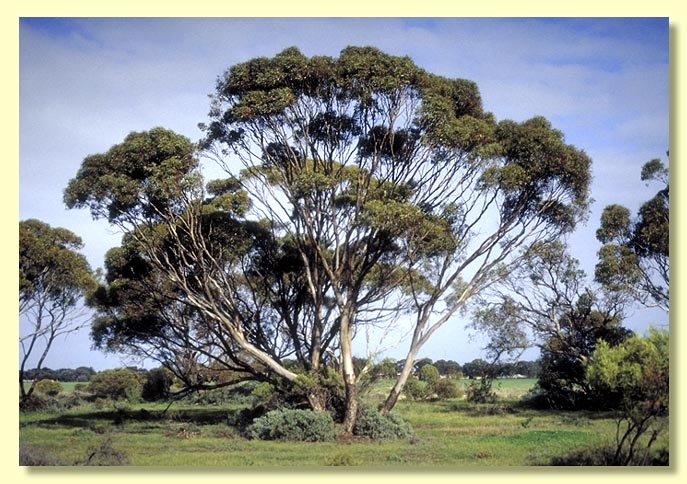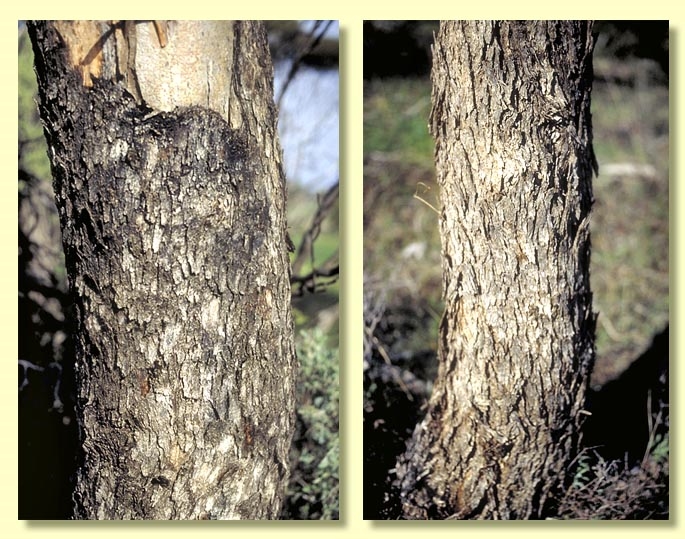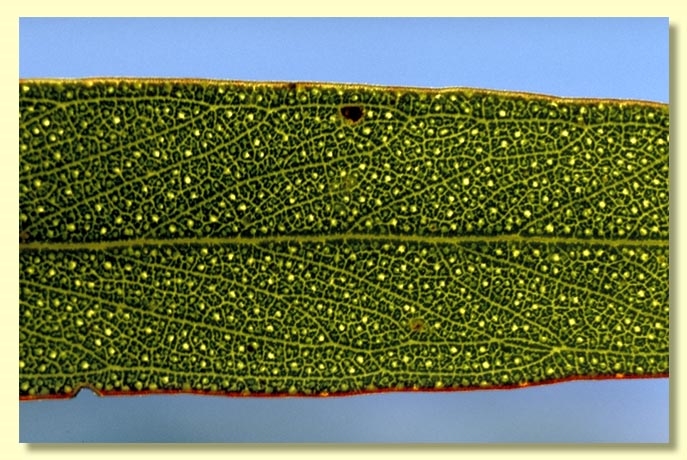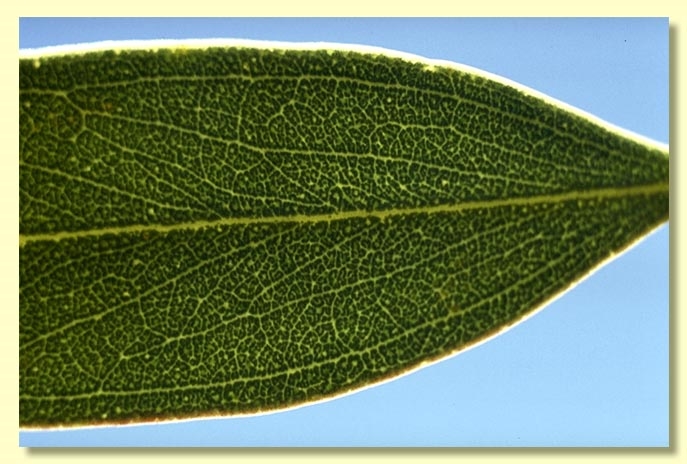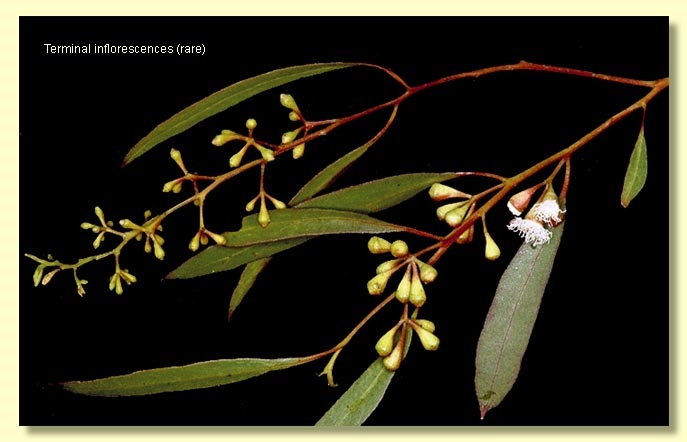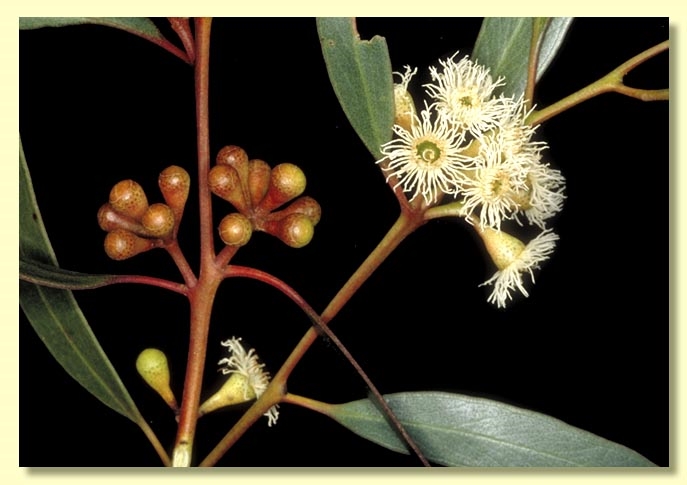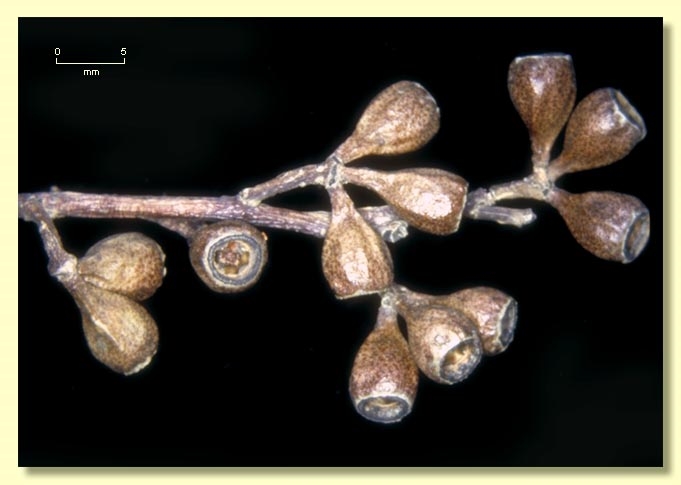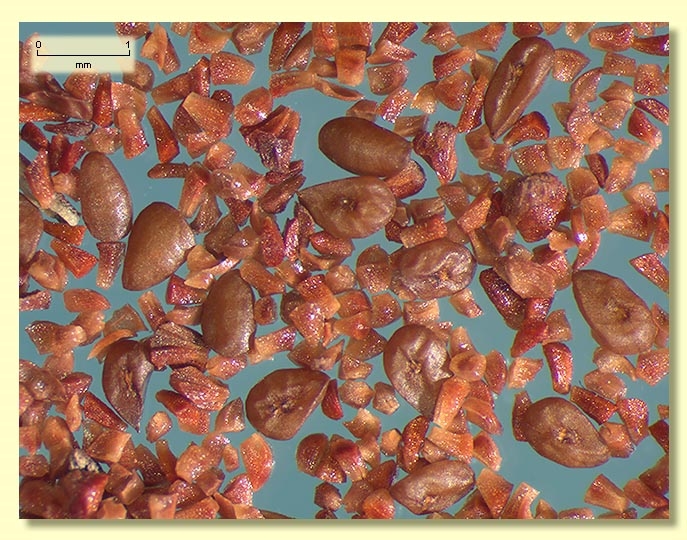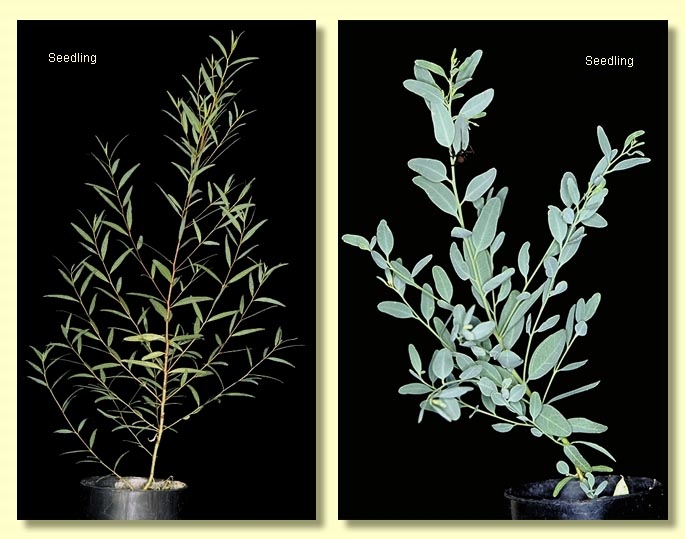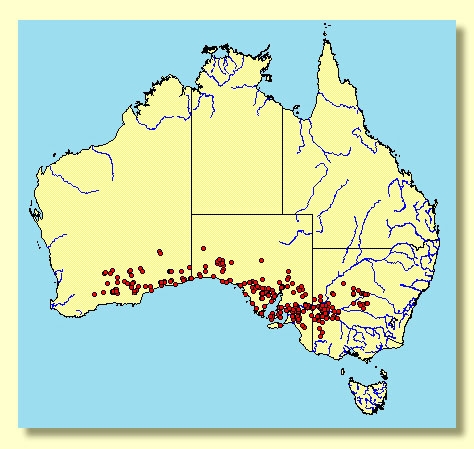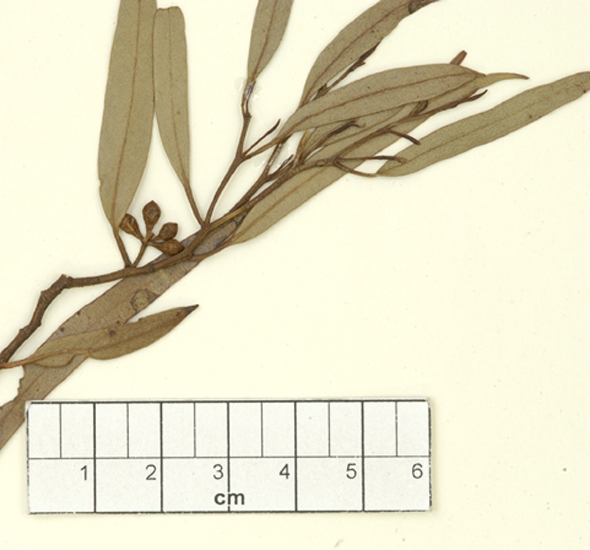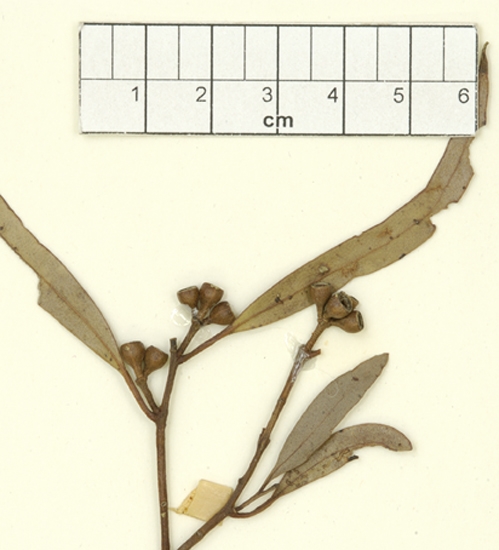Euclid - Online edition
Eucalyptus gracilis
Eucalyptus | Symphyomyrtus | Bisectae | Destitutae | Heterostemones
Eucalyptus calycogona var. gracilis (F.Muell.) Maiden, Crit. Revis. Eucalyptus 1: 79 (1903). T: Murray Scrub, S.A., Dec. 1848, F.Mueller s.n.; lecto: MEL, fide J.H.Willis, Muelleria 1: 166 ( 1967); isolecto: G, K, NSW.
Eucalyptus gracilis var. breviflora Benth., Fl. Austral. 3: 211 (1867). T: Darling and Murray Desert, S.A., F.Mueller s.n.; holo: K.
Eucalyptus gracilis var. erecta Blakely, Key Eucalypts 266 (1934). T: Memory Cove, Port Lincoln, S.A., Jan. 1907, J.H.Maiden s.n.; holo: NSW; iso: AD, BM, K, PERTH.
Eucalyptus gracilis var. viminea Blakely, Key Eucalypts 266 ( 1934). T: Range near Griffith, NSW, Aug. 1922, W.F.Blakely & D.W.C.Shiress s.n.; holo: NSW; iso: CANB.
Bark usually rough on lower stems (rarely smooth throughout), tessellated box-type, flaky or fibrous, grey or brown; smooth bark white, pink, brown or grey, sometimes powdery.
Branchlets lacking oil glands in the pith.
Juvenile growth (coppice or field seedlings to 50 cm): stems rounded in cross-section; juvenile leaves always shortly petiolate, opposite for 6 or 7 nodes, then alternate, linear to narrowly lanceolate, 3.3–9 cm long, 0.9–1.8 cm wide, dull, blue-green to grey-green.
Adult leaves alternate, petiole 0.5–1.5 cm long; blade narrowly lanceolate to linear to slightly falcate, 4.5–11 cm long, 0.4–1.7 cm wide, usually tapering to petiole, rarely oblique, concolorous, very glossy, green, side-veins acute, moderately to densely reticulate but incomplete and obscured by large, irregular oil glands, intramarginal vein parallel to and just within margin or remote from it.
Inflorescence usually axillary unbranched, rarely terminal compound, peduncles 0.5–1.6 cm long, buds 7, 9 or 11 per umbel, pedicellate, pedicels 0.2–0.5 cm long. Mature buds clavate to pyriform or scarcely 4-angled (0.3–0.7 cm long, 0.3–0.5 cm wide), green to yellow, scar present (outer operculum shed early), operculum rounded to flattened (0.1–0.3 cm long), stamens ascending and then flexed tangentially, then inflexed, with outer staminodes much twisted in flower, the inner perfect stamens with much shorter filaments, anthers weakly versatile to adnate, basifixed, oblong-reniform to globoid, opening by lateral pores, style long, stigma blunt to tapered, locules 3 or 4, the placentae each with 4 vertical ovule rows. Flowers white.
Fruit pedicellate (pedicels 0.1–0.6 cm long), cup-shaped, cylindrical, barrel-shaped or sub-urceolate, sometimes slightly 4-angled, 0.4–0.8 cm long, 0.3–0.7 cm wide, disc descending, valves 3 or 4, enclosed.
Seeds usually reddish brown, 1–1.7 mm long, ovoid or flattened-ovoid, often pointed at one end, sometimes furrowed dorsally, dorsal surface smooth, hilum ventral.
Cultivated seedlings (measured at node 10): cotyledons Y-shaped (bisected); stems rounded in cross-section, smooth or slightly warty; leaves shortly petiolate or subsessile, opposite for 6 to 11 nodes then alternate, narrowly elliptic or narrowly lanceolate, 1.5–7.5 cm long, 0.3–2 cm wide, dull, greyish green
Flowering has been recorded in all months except February.
A mallee or small tree widespread in southern Australia, from east of Southern Cross in Western Australia through mallee areas of South Australia to the Big Desert and Sunset Country of Victoria east as far as Manangatang and into New South Wales as far as Griffith, Euabalong and Yathong. The bark of mature mallees or trees is rough, often tessellated in the lower half, and the adult leaves are glossy green.
Eucalyptus gracilis belongs in Eucalyptus subgenus Symphyomyrtus section Bisectae subsection Destitutae because buds have two opercula, cotyledons are Y-shaped and branchlets lack oil glands in the pith. Within this subsection E. gracilis is one of seven closely related species that form series Heterostemones. This series is characterised by the barren outer stamens that are conspicuously twisted and spreading in flower and the much shorter fertile inner stamens that are held erect. Species in this group also have narrow fruit with a descending disc and enclosed valves while the leaves have side-veins quite acute at the base of the lamina and usually sparse reticulation.
E. gracilis has stoutly pedicellate buds that are more or less rounded in cross-section and have a rounded to flattened operculum, fruit to 0.7 cm diameter and narrow juvenile leaves. The closest relative and species most likely to be confused (in Western Australia) is E. yilgarnensis, which has conspicuously pedicellate small buds with shallowly rounded to conical operculum, fruit that are barrel-shaped and never more than 0.4 cm diameter and ovate to elliptical juvenile leaves. Other related species likely to be confused are E. brevipes, which has shortly pedicellate buds with conical to beaked operculum and more cylindrical fruit, and E. celastroides subsp. virella, which has buds that are square basally and have a conical operculum and urceolate fruit. E. celastroides subsp. celastroides differs further in having a grey-green to glaucous crown. The remaining species in series Heterostemones, E. calycogona, E. prolixa and E. quadrans, all have buds and fruit square in cross-section and should never be confused with E. gracilis. In south-eastern Australia E. gracilis is one of the most easily recognised mallee species when in flower because of its spreading sterile outer stamens and buds and fruit that are never conspicuously angular (unlike E. calycogona).

